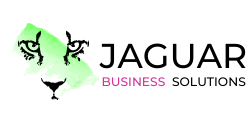Project Objective:
Redesign the user interface (UI) and user experience (UX) of a nonprofit’s customer-facing web store and member portal
Framework / Methodology:
Agile; two-week sprints
Project Management System:
Smartsheet
Constraints:
Timeline; Quality
Risks:
Too many design iterations; schedule management
Outcome:
Julie collaborated with a nonprofit organization to completely overhaul the user interface (UI) and user experience (UX) of the nonprofit’s web store and member portal. The portal served as a crucial touchpoint for members, enabling them to manage their membership accounts, make purchases, and view their membership benefits. However, the existing interface wasn’t quite up to snuff. It lacked clear and intuitive navigation, thus creating a fragmented buyer’s journey. Stakeholders speculated that the poorly designed member portal was harming sales. What’s more, the organization lacked in-house knowledge and skills on what “good” UI looked like. Julie was tasked with leading the redesign project, a high-stakes initiative, given its impact on member satisfaction and engagement and primary stakeholder involvement.
One of the most significant challenges Julie faced was the tight timeline and the heavy push from stakeholders to release immediate improvements. The nonprofit aimed to unveil the new portal during the sale of a significant annual event, leaving just 60 days for the complete redesign, design approval, development, testing, and deployment. Julie knew meeting this deadline would require a streamlined approach to stakeholder engagement, which historically had been a bottleneck in the nonprofit’s projects. Stakeholders, ranging from board members to department leads, often struggled to align on decisions during the design phase, creating delays that could jeopardize the timeline. Julie’s strategy and approach focused on engaging with a vendor specializing in UI design and development with a successful track record. She also focused on fostering transparent and efficient collaboration while ensuring all voices were heard.
Julie implemented structured “demos” or workshop sessions, allowing stakeholders to provide their feedback before moving into development work. Additionally, she implemented a phased approval system, breaking the design process into manageable milestones. By doing so, stakeholders were required to provide feedback within specific windows, reducing the risk of last-minute changes and scope creep. To maintain momentum, Julie maintained regular communication primarily through weekly and biweekly meetings, “huddles”, and email communication, doing her best to keep everyone informed and accountable.
Although the first deployment was fraught with system challenges and bugs, the team made it through… Despite the challenges, Julie’s meticulous planning and proactive communication led to the successful launch of the redesigned portal on schedule. The new interface was visually appealing, intuitive, and aligned with the nonprofit’s values.

